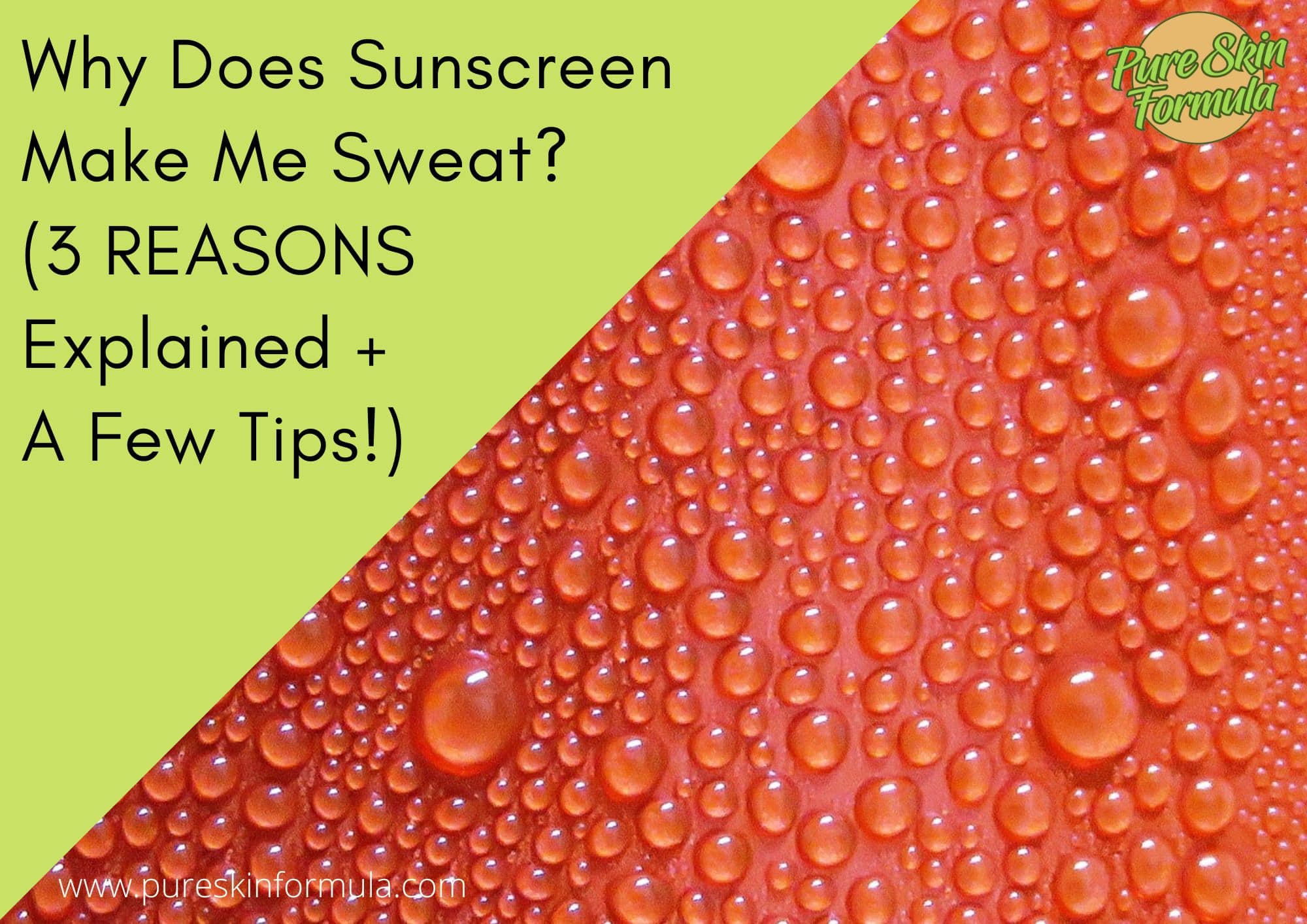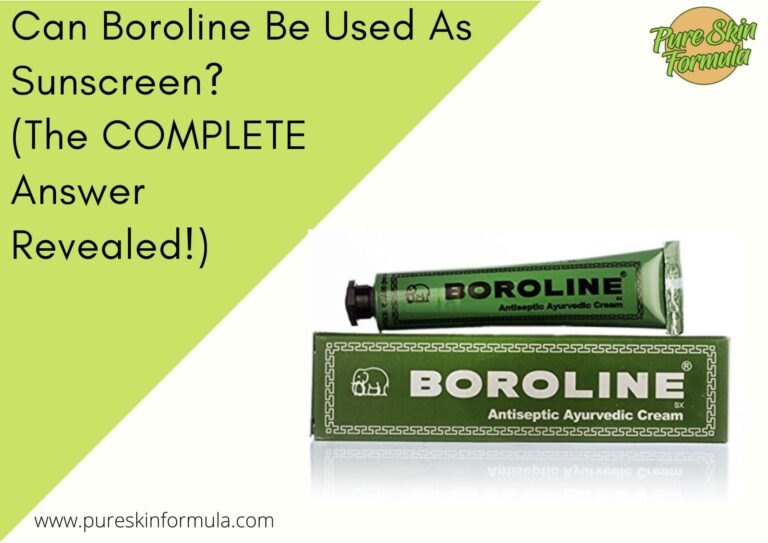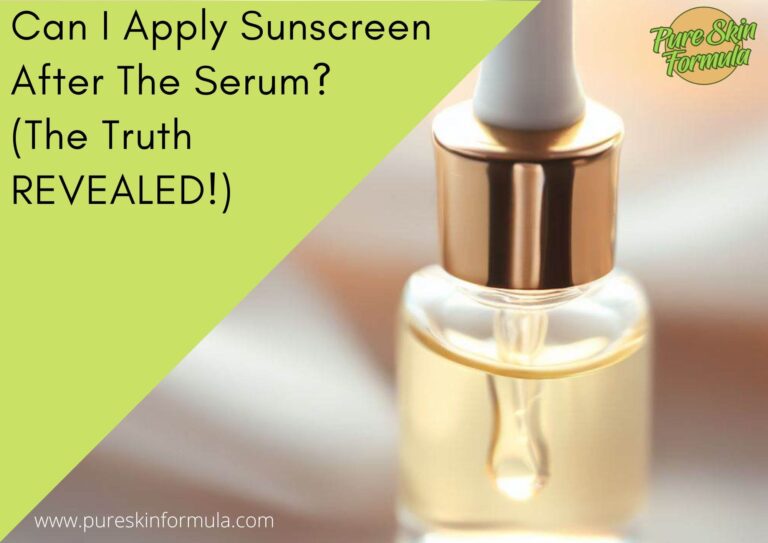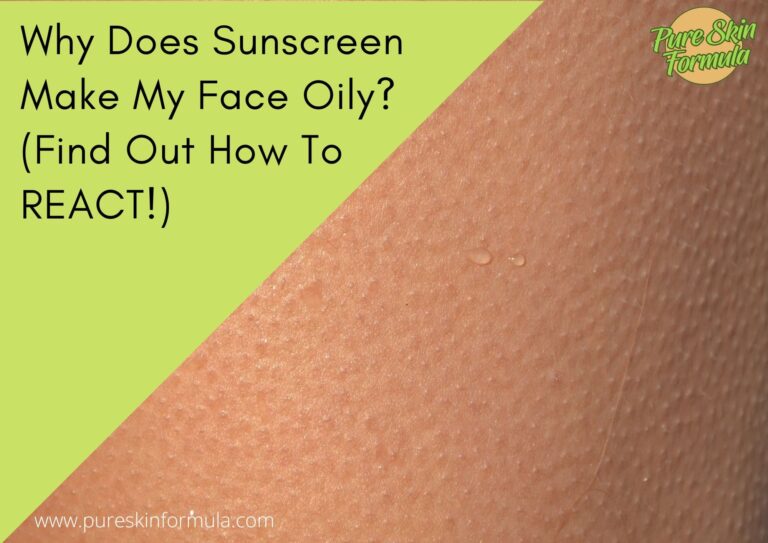Attention, sun-worshippers! Picture this: you’re lounging on the beach, the sun shines, and the waves gently crash against the shore.
You decide to dip in the ocean to cool off, but as soon as you step out, you notice something odd. You’re sweating. But why?
You’ve just applied sunscreen; shouldn’t it protect you from the sun’s rays? This common phenomenon leaves many of us scratching our heads and wondering why we sweat.
In this blog post, I’ll dive into the science behind this puzzling question and explore why sunscreen can sometimes lead to excessive sweating.
I’ll examine the various types of sunscreen and how they interact with the body’s sweat glands.
I’ll also provide practical tips on minimizing sunscreen’s effects on sweating so you can enjoy your time in the sun without any surprises. So, let’s get started!
Why does sunscreen make me sweat?
Sunscreen can make you sweat for several reasons, depending on the sunscreen you use and how you apply it.
- Sunscreen can cause sweating because it creates a barrier on the skin’s surface, which can trap heat and prevent sweat from evaporating. This can lead to a buildup of heat and moisture on the skin, causing the body to sweat more to cool down. This effect is more robust with physical sunscreens containing ingredients like zinc oxide or titanium dioxide on the skin’s surface.
- Chemical sunscreens, on the other hand, work by absorbing UV rays and converting them into heat, which is then released from the skin. This heat can also contribute to sweating, mainly if the sunscreen is applied heavily or not allowed to absorb into the skin thoroughly.
- Some people may be sensitive to the ingredients in sunscreen, which can cause an allergic reaction or irritation that triggers sweating. This is more likely to occur with chemical sunscreens, which contain various ingredients like avobenzone, octinoxate, or oxybenzone, which some people may be allergic to or have a sensitivity to.
Let’s go deeper into this topic as we start with sweating. Why do we sweat? The primary purpose is to regulate the body’s internal temperature.
When the body gets too hot, sweating helps cool it down by releasing moisture onto the skin’s surface.
This moisture then evaporates, taking heat with it and helping to lower the body’s temperature.
The sweating process in our body explained
It is a complex physiological response that involves several systems in the body. It begins when the body’s internal temperature rises above its normal range, around 98.6°F (37°C).
This increase in temperature can be caused by various factors such as exercise, exposure to heat, fever, stress, or even eating spicy foods. When the body’s temperature rises, the hypothalamus, a small part of the brain, sends signals to the sweat glands all over the body.
These glands produce and release sweat, mainly composed of water, salt, and small amounts of other minerals and chemicals. The sweat is released onto the skin’s surface through tiny pores, which allows it to evaporate and cool the body down.
This process, known as thermoregulation, is essential to maintaining the body’s internal temperature within a safe range. Sweating is a natural and necessary process that helps the body regulate its temperature.
Still, excessive sweating or sweating in some regions of the body can be a sign of a medical condition known as hyperhidrosis.
What is the role of sweat glands?
The sweat glands play a crucial role in the sweating process, as they are responsible for producing and releasing sweat. There are two main types of sweat glands: eccrine and apocrine.
Eccrine glands are the most common sweat glands found all over the body. They are responsible for producing a watery, odorless sweat that helps to regulate the body’s temperature.

Eccrine glands are most active during exercise, hot weather, and other conditions that cause the body to heat up.
Apocrine glands are found primarily in the armpits and groin area, producing a thicker, milky sweat higher in protein and fat. This type of sweat is more prone to odor because it is broken down by bacteria on the skin.
Apocrine glands are not as crucial for temperature regulation as eccrine glands but may play a role in pheromone production and social signaling.
The sympathetic nervous system regulates both types of sweat glands, which control the body’s involuntary functions.
When the body’s internal temperature rises or when the sympathetic nervous system is activated, signals are sent to the sweat glands, triggering the release of sweat onto the skin’s surface.
OK, now let’s see the role of sunscreen in sweating.
How can sunscreen cause sweating?
There are two main types of sunscreen – physical and chemical.
Both can cause sweating because they can create a barrier on the skin’s surface that can trap heat and prevent sweat from evaporating.
This effect can be more pronounced with physical sunscreens, which contain ingredients like zinc oxide or titanium dioxide on the skin’s surface and can make it harder for sweat to evaporate.
Chemical sunscreens, on the other hand, work by absorbing UV rays and converting them into heat, which is then released from the skin.

This heat can also contribute to sweating, mainly if the sunscreen is applied heavily or not allowed to absorb into the skin thoroughly.
Some people may be sensitive to the ingredients in sunscreen, which can cause an allergic reaction or irritation that triggers sweating.
This is more likely to occur with chemical sunscreens, which contain various ingredients like avobenzone, octinoxate, or oxybenzone, which some people may be allergic to or have a sensitivity to.
The act of applying sunscreen itself can also cause sweating. The friction of rubbing the sunscreen onto the skin and the physical exertion involved in applying it to hard-to-reach areas can trigger the sweat glands and cause sweating.
Overall, both types of sunscreen can cause sweating.
Still, the degree to which they do so can vary depending on several factors, including the type of sunscreen, how it is applied, and individual factors like skin type and sensitivity.
How to minimize the effects of sunscreen on sweating?
You are not helpless. There is a lot you can do in terms of choosing and applying the product.
Choosing the correct type of sunscreen:
1. Look for lightweight, non-greasy formulas that absorb quickly into the skin and don’t leave a heavy residue.
2. Consider using sunscreen formulated explicitly for athletes or those who sweat heavily. These sunscreens are designed to be more water-resistant and sweat-resistant.
3. Choose a sunscreen labeled “non-comedogenic,” meaning it won’t clog your pores and contribute to sweating.
Applying sunscreen correctly:

1. Apply it at least 20 minutes before going outside to allow it to absorb into the skin thoroughly.
2. Apply it evenly and thoroughly to all exposed areas of skin, including hard-to-reach areas like the back of the neck and ears.
3. Reapply sunscreen every two hours or after swimming or sweating heavily.
Other tips to reduce sweating:
1. Wear lightweight, breathable clothing that circulates air around your skin.
2. Consider using antiperspirant products specifically formulated for use on the body to help reduce sweating.
3. Stay hydrated by drinking plenty of water, which can help regulate your body temperature and reduce sweating.
By following these tips, you can help minimize the effects of sunscreen on sweating and stay protected from the harmful effects of the sun.
To wrap it up
Sunscreen is an essential tool in protecting your skin from the harmful effects of the sun.
While it may cause sweating for some, it’s important to remember that proper application and choosing the right type of sunscreen can minimize these effects.
By following the tips outlined in this article, you can stay protected from the sun’s rays and enjoy all that the great outdoors has to offer.
So, go ahead and soak up the sun, knowing you’re armed with the knowledge to stay protected and comfortable all summer.
Thank you for reading!
Valeria







